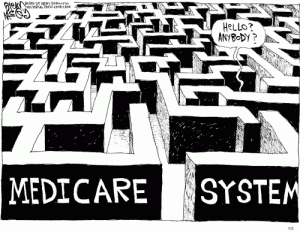NIC’s View of the Senior Living Market Space
Several weeks ago I published an article titled “6 Reasons a Senior Living Glut Could Be a Blessing”. That article was inspired by a Bloomberg News article that prognosticated a senior living glut. In my article I expressed a level of skepticism that Bloomberg was right, but also postulated on why at least a bit of a glut could be healthy. As I was working on the article I reached out to Bob Kramer at NIC to see if they would be willing to react to the article. Although NIC could not opine on the specific assertions in the article, they did offer to provide a perspective on the market, based on their research data. The Health of the Market Here are the highlights of their response:
- Looking back from the second quarter of 2014, they see the number of units under construction (in the primary markets) at about 17,000 units. This is about 3.2% of the total existing inventory.
- This construction is, for the most part, limited to a small number of markets. For independent living, 88% of the construction was taking place in just 10 metropolitan markets. The San Antonio market had the most number of units with 648.
- 68% of the new assisted living (non-memory care) construction is taking place in the top 10 markets.
- For freestanding memory care, 90% of the new construction is in the top 10 markets.
- In order to understand what these new construction numbers mean it is important to look at demand both nationally and at the metropolitan market level.
- NIC sees a favorable growth in demand as the seniors population continues to grow and the economy improves.
- Together all these conditions suggest there will be continued growth in demand over the next few months at a level that will outpace the new supply of inventory coming on-line. They are expecting a slight increase in the occupancy rate to around 90.5% by the second quarter of 2015.
Good News and . . . The obvious good news is that the market is healthy and there will continue to be opportunities for new development. The question I still find myself contemplating is whether or not we should see a 90% occupancy as good enough. Perhaps the better question might be what should be what occupancy level should be seen as full occupancy, after taking into consideration the natural churn that is a part of the industry. Finally, I continue to believe there is still a great opportunity to tell our story better and to improve on the number of choices a senior has. This will result in an improvement in the market penetration rate and will be good for seniors and providers alike.
Steve Moran
If you like this article (or even if you don’t) it would be a great honor to have you subscribe to our mailing list HERE Photo Copyright: aaronamat / 123RF Stock Photo








